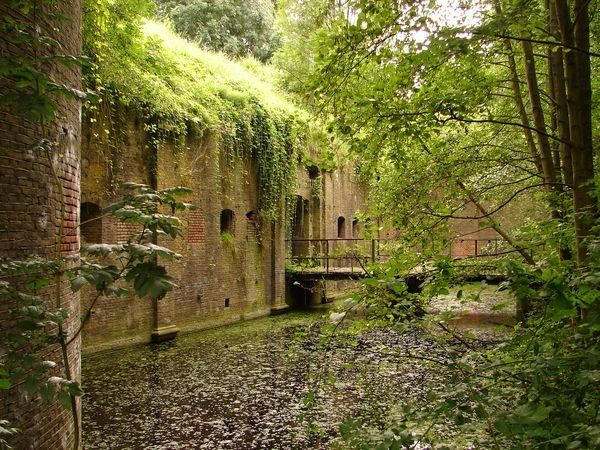
Fort bij Vechten
Waterline Museum Fort bij Vechten is a unique and spectacular museum where you can learn all about the way that water was used in the defence of the Netherlands.
Fort bij Vechten
Fort bij Vechten was built between 1867 and 1870 and forms part of the New Dutch Waterline. The complex is surrounded by a wide moat and consists of 22 buildings, including flank and reverse batteries, shellproof military barracks and guard buildings. Incidentally, the history of this strategic site dates back even further in time: during the construction of the fort, the remains of an ancient Roman fort were also found in the immediate area.
Between 1950 and 1996, Fort bij Vechten…
Waterline Museum Fort bij Vechten is a unique and spectacular museum where you can learn all about the way that water was used in the defence of the Netherlands.
Fort bij Vechten
Fort bij Vechten was built between 1867 and 1870 and forms part of the New Dutch Waterline. The complex is surrounded by a wide moat and consists of 22 buildings, including flank and reverse batteries, shellproof military barracks and guard buildings. Incidentally, the history of this strategic site dates back even further in time: during the construction of the fort, the remains of an ancient Roman fort were also found in the immediate area.
Between 1950 and 1996, Fort bij Vechten was used as a storage site by the Dutch Ministry of Defence. In 1996, it became the property of Staatsbosbeheer (the National Forest Service in the Netherlands). Since October 2015, it houses the Waterline Museum, where you can learn about the history of the Dutch Waterline.
Waterline Museum
The Waterline Museum has interactive exhibits on the Dutch Waterlines, the Romans and the flora and fauna that can be found on the forts. Here you can learn all about the history of the Netherlands’ largest defensive line.
The 50-metre open-air model of the New Dutch Waterline can be flooded just like the real Waterline, and in a unique virtual reality experience you can get a view down onto the entire Waterline from up in the sky.
In addition to the museum, you can also learn more on the site about life at the forts during World War I, and you can see what the fort would have looked like after it had just been built.
